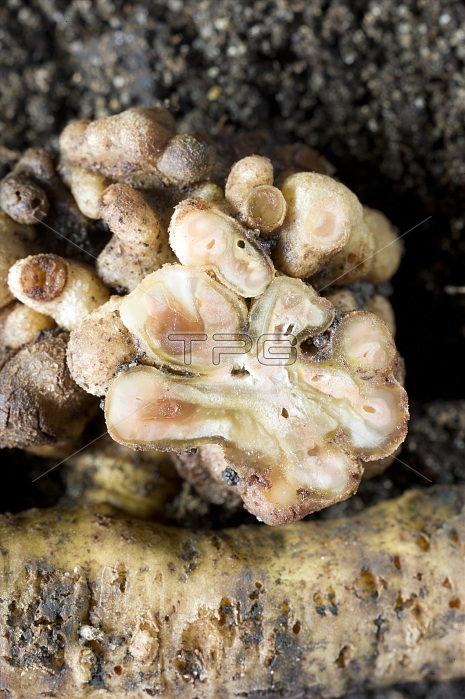
Nitrogen-fixing nodules on roots of a garden lupin, Lupinus polyphyllus, caused by Rhizobium bacteria. The picture shows grouped nodules (centre) growing on a secondary root (bottom edge) The nodule mass has been sliced open to show the contents. Areas of pink within the nodules show locations at which leghaemoglobin is present and active nitrogen fixation is occurring. The frame width is approximately 4cm.The association between Rhizobium species and leguminous plants is an example of symbiosis (mutual benefit). The bacteria enter the plant roots and induce the formation of a tumour-like outgrowth, or nodule. Within the nodule, the bacteria proliferate and develop the ability to fix atmospheric nitrogen, using leghaemoglobin. This fixed nitrogen is beneficial to the plant for its growth, and the bacterium benefits from carbon compounds made by the plant
| px | px | dpi | = | cm | x | cm | = | MB |
Details
Creative#:
TOP24880334
Source:
達志影像
Authorization Type:
RM
Release Information:
須由TPG 完整授權
Model Release:
N/A
Property Release:
N/A
Right to Privacy:
No
Same folder images:

 Loading
Loading